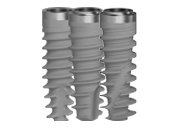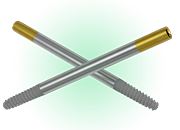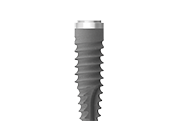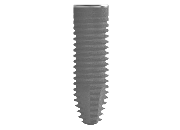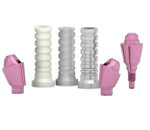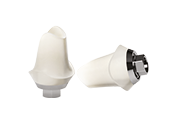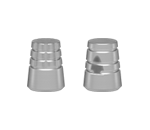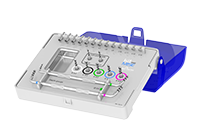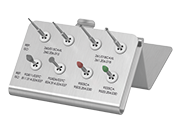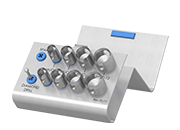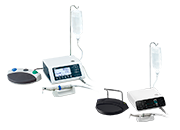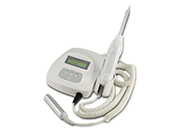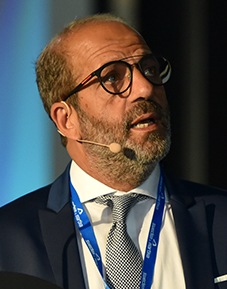The radiological investigation and the probing revealed that the cause of tooth mobility is an increased periodontal space because of occlusal trauma and periodontal disease. For this reason, the final crown was planned so that the incisal edge could lay on the mesial crest of the antagonist, free from lateral excursion and protrusion.
It was therefore decided to extract the compromised element and immediately insert a Prama implant. To treat the extended vestibular defect detected at the probing of the post-extractive socket the vestibular gap was filled in differentiated strata, that is, keeping the autologous bone collected from the drill in contact with the surface of the implant and inserting deproteinized bovine bone particles in the remaining space. The possibility to choose the endosseous cylindrical morphology and to deepen the position of the implant allowed on one hand to obtain a better primary stability, on the other hand to adapt the morphology of the neck to what remains of the receiving alveolus.
Thanks to a progressive soft tissue modulation, obtained through various adaptations of the temporary crown and supported by a regeneration with connective tissue, it was possible to obtain a stable and aesthetic rehabilitation, up to the recovery of the prominence of the root.
Once the element 1.2 was restored, the patient accepted a connective graft at the level of elements 2.2 and 2.3 to make the whole profile of the parabola more symmetrical and harmonious.

